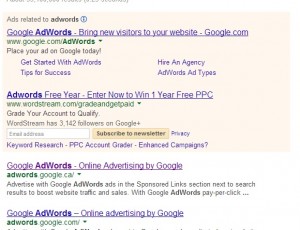Difference Between Adsense and Adwords
Unlike my other posts, this is not a new topic; however I wanted to blog about Adsense and Adwords as until today I did not understand the difference.
Google Adwords is a way that business’s can create paid ads that appear in Google Search. Typically paid search ads are situated at the top of a search or to the side and are distinguishable by their faded yellow background. Whereas organic search are shown below the paid search items; shown below.
The reason that Google Adwords is so influential for business’s is shown in the below image. The image demonstrates an eye tracking study conducted by Google; and demonstrates where consumer’s are most likely to look when they search on Google; and therefore it is beneficial for businesses to pay for the top ads.
On the other hand, Adsense is where a Web Publisher submits their website to Google. Once the website is approved based on its relevance, the Web Publisher chooses were they want ads to be situated on their web pages. Adsense provides relevant ads that are related to the website being viewed by the consumer, as shown below:
Therefore the difference between Adwords and Adsense is that Adwords allows businesses to pay for ads; and Adsense is where Web Publishers partner with Google to spread the Adword advertising whilst making a profit.












